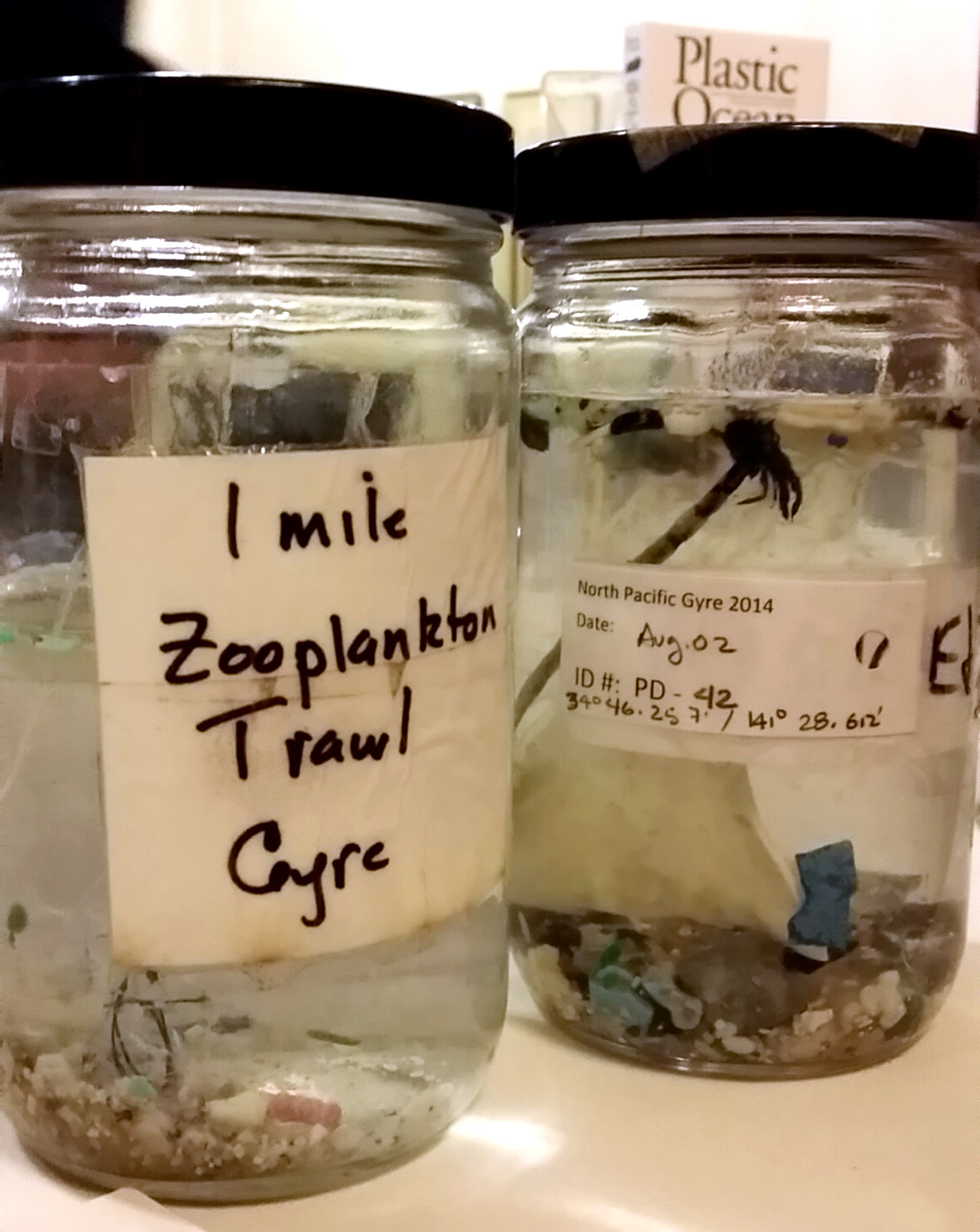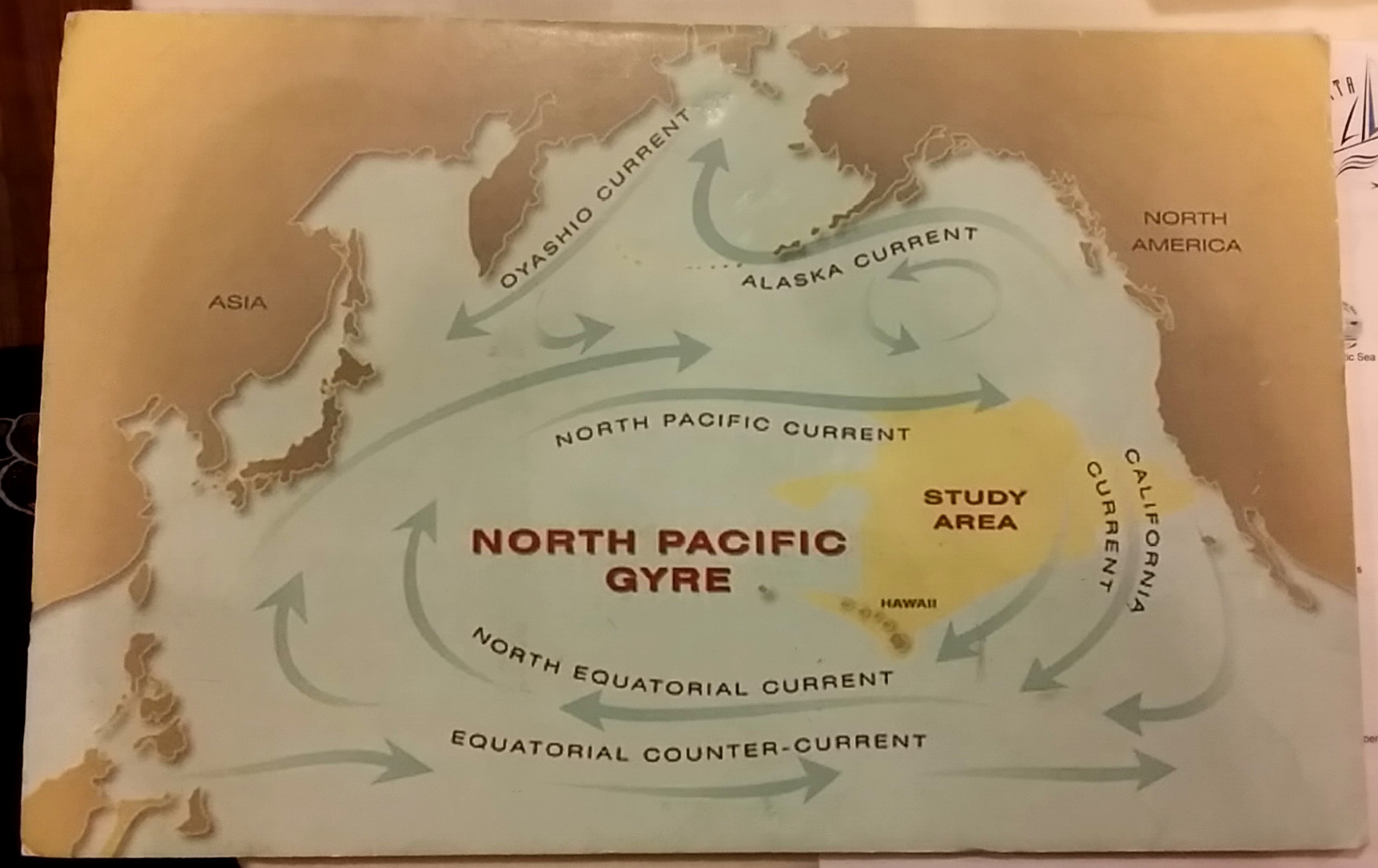Last Tuesday in Berkeley, Clean Water Action hosted an eye-opening event that featured Captain Charles Moore discussing his most recent voyage to the North Pacific Gyre, the largest of the five plastic-trash-swirling vortexes in our oceans. After his talk, a panel comprised of Beth Terry from the blog My Plastic Free Life, Stiv Wilson from The Story of Stuff project and Miriam Gordon, California director of Clean Water Action, presented solutions. I had donated two of my in-person fermentation workshops for a zero-waste raffle which took place at the end of the night.
Just some of Captain Moore’s findings:
- He could not travel without seeing copious amounts of plastic every day.
- As his vessel drew nearer to the gyre, he saw plastic in the ocean sooner than he ever had on his previous nine trips there.
- The number of larger plastic pieces has increased. Captain Moore attributed some of this to rampant consumerism taking off in China. He did not used to find whole flippers or plastic crates floating around.
- Rainbow runner fish, a commonly eaten species in Hawaii, are now on a plastic diet, with bellies full of the stuff. Their future looks bleak.
- All samples of plankton on this excursion contained plastic particles in their tissues.
- Plastic will soon outnumber plankton by a factor in the 100s.
Just some of the problems all this plastic pollution creates:
- The sun photodegrades plastic, meaning it breaks plastic down into small bits. But plastic doesn’t biodegrade. Not only does this plastic pollution never go away, birds and fish mistake these little plastic bits for food.
- Many of the plastic particles in the ocean also result from animals chewing on larger chunks of plastic, believing they have found a nutritious food source.
- Moore called plastic bottle caps “The food of the albatross.” Albatrosses and other birds feed these ubiquitous items to their young, which feel full, starve and die.
- Plastic has entered our food chain. But wait, there’s more! Plastic bits in the ocean absorb toxins from the polluted waters. When the fish mistake these “poison pills” for food and eat them, the toxins present in these undigestible particles enter their systems, which move up the food chain and onto our dinner plates.
- When it dies and sinks to the bottom of the ocean, plankton sequesters carbon. However, we now attach little flotation devices—bits of plastic—to plankton. The slowdown of sequestered carbon may be related to this process.

You can read more about Captain Moore’s work and discoveries in his book Plastic Ocean. I bought a copy at the event, which he signed 🙂
So what do we do now? We can’t clean up this mess. It would be like vacuuming the entire United States with a Hoover.
“Source reduction is the only answer.” — Captain Charles Moore
Today kicks of Plastic Free July. Thousands of people around the world will refuse plastic for the entire month and you can join in here. If you ditch the plastic, you’ll likely immediately notice a change in your eating habits. When a team at Clean Water Action surveyed street litter in the San Francisco Bay Area, they found that food and beverage packaging accounted for 67 percent of the trash. So, once again, I present my answer for just about everything in life:
Learn to cook!
Cut out the processed, packaged food-like products. Buy loose farmer’s market fruits and vegetables in cloth shopping and produce bags. Fill jars with staples at the bulk bins. And check out my recipe index and that of my daughter, The Plastic-Free Chef, for plastic-free alternatives. Think I’m over here practicing self-flagellation and denying myself? Hardly. Since going plastic-free in 2011, I eat tastier food, I don’t get sick and I have more fun! You don’t need to have attended cooking school in order to feed yourself. After all, I am not a professional chef and that is the point.




Reblogged this on The Zero Journey and commented:
Adding this blog from “The Zero-Waste Chef” blog. This is one of those shocking bits I learned from “The Clean Bin Project”, which was one main driving factor for cutting out plastics in my life. It just sickens me that we have done this to our ocean waters and every organism that lives within it, which affects the entire rest of the world’s circle. Thank you for this reminder.
Thanks so much for the reblog. The state of our oceans is what prompted me to cut the plastic too. And I soon realized it’s not that difficult! And it has improved my life so much!
Wow. We are gradually decreasing waste for several reasons – health, cost, and environmental. I have been using the bulk food store’s harmless-looking flimsy little plastic bags but I think I’m going to go through my stash of fabric scraps and make some more bags.
It was horrifying. You don’t see the pollution from above, you have to snorkel beneath the surface. He showed us a long video taken under the water and the dense plastic crap floating around in there goes on and on and on, he said for hundreds of miles. At one point he looked out at the audience and just pleaded, “Can’t we do something about this?” We’re destroying our very life-support systems.
[…] The Zero-Waste Chef reminded me why plastic waste is such a huge problem, with her post on the insane amount of plastic currently floating in the Pacific Ocean and all the awful things it doe…, while Lindsay from Treading My Own Path posted about an inspiring new bulk store that actively […]
Wow! Looking at the date of your post, I feel so late to start reducing my plastic. I remember reading about the Pacific plastic garbage patch years ago, but I guess like a lot of people,I thought it could be scooped up and didn’t do much. I live in Colorado and didn’t think changing my purchasing and living habits would make a difference. Then after Blue Planet II, I began to get serious about going plastic-free. I still feel like my actions are a drop in the bucket. Thank you for your passion to teach all of us how to live without plastic!